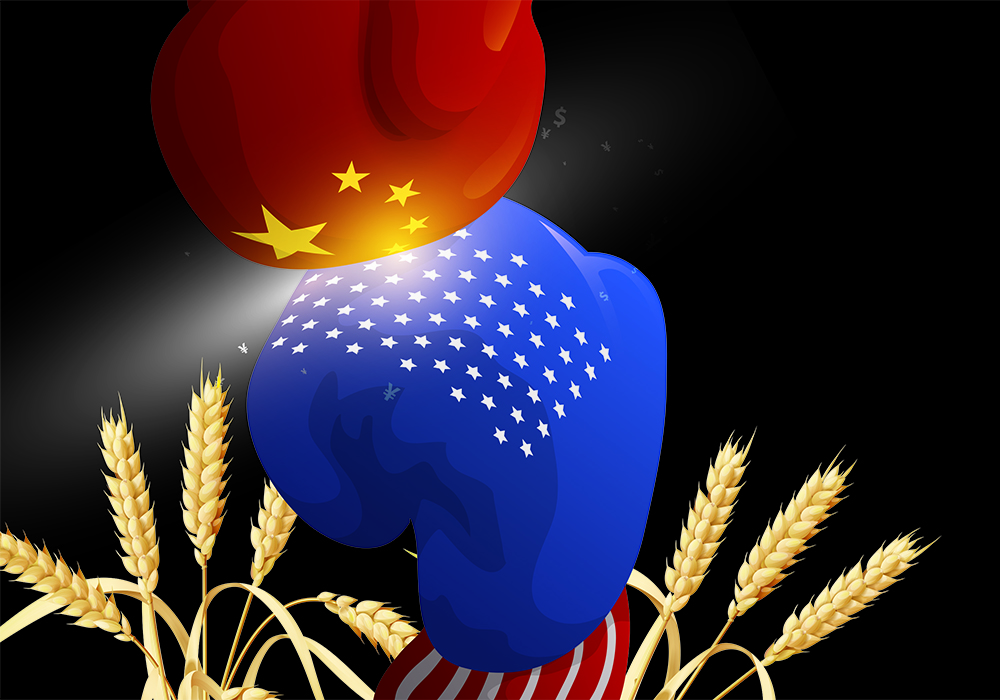The United States and China continue to duke it out in a World Trade Organization subsidy dispute that has the potential to radically transform world wheat markets.
On Feb. 28, 2019, a WTO dispute panel ruled that China’s subsidy payments distorted global wheat trade by exceeding its WTO commitments by billions of dollars.
The panel gave China until July 31, 2020, to revamp its Minimum Procurement Prices (MPP) program.
China claims it has revised the program for the 2020-21 crop year to be in compliance with its WTO commitments by capping the amount of wheat it can purchase from farmers.
Read Also

Using artificial intelligence in agriculture starts with the right data
Good data is critical as the agriculture sector increasingly adopts new AI technology to drive efficiency, sustainability and trust across all levels of the value chain.
In the past there was no cap on the program.
However, U.S. Wheat Associates (USW) said China’s revisions are a joke.
The cap was set at 37 million tonnes, which is 40 percent higher than the government’s average annual purchases over the past five years.
In addition, Chinese farmers use the MPP program as a bartering chip to receive inflated prices from Chinese millers. That dynamic causes the program to distort the domestic market far beyond the bushels purchased by the Chinese government, said USW.
“There’s really still an incredibly strong incentive for Chinese producers to overproduce wheat,” said Dalton Henry, vice-president of policy with USW.
The U.S. has requested permission from the WTO to retaliate for what it perceives to be China’s non-compliance by slapping punitive tariffs on $1.3 billion of yet-to-be-determined Chinese imports.
In the meantime, China has requested a ruling from a WTO compliance panel.
It will likely take six months to a year to sort everything out.
The U.S. also recently won a separate WTO challenge about China’s mismanagement of its tariff rate quota (TRQ) for wheat.
When China joined the World Trade Organization it committed to an annual TRQ of 9.64 million tonnes of wheat to be imported at a one percent duty. Anything above that is slapped with a 65 percent duty.
But China hasn’t come close to filling that TRQ. Imports have averaged 3.89 million tonnes over the past five years despite international prices being way lower than China’s domestic prices.
If China properly reforms the administration of its TRQ it could suddenly become the world’s second-biggest wheat importer behind Egypt, said Henry.
USW said it should become apparent this fall if China is conforming with the WTO ruling and properly reallocating unused TRQ.
Together, the two successful WTO challenges have potential to radically transform the wheat market if China fully complies with the rulings.
China’s MPP for wheat was US$8.60 per bushel last year. That compares to the U.S. Marketing Loan Program price of $3.38 per bu. and the current U.S. f.o.b. price of $5.69 per bu. for hard red winter wheat.
USW said China’s MPP program has led to a 25 percent increase in Chinese wheat production, which is contributing to the country’s massive market-distorting stockpile of the commodity.
The U.S. Department of Agriculture estimates China will have 162.5 million tonnes of wheat reserves at the end of this year or 52 percent of the world’s supply.
A 2016 Iowa State University study sponsored by USW determined that China’s MPP is costing U.S. farmers $653 million per year in lost revenue by eliminating export opportunities for the crop.
The same study said the program is costing Canadian farmers $252 million per year.
MarketsFarm analyst Bruce Burnett said there is no doubt China’s subsidies are negatively impacting the global wheat market but he thinks the U.S. wheat sector is “tilting at windmills” in its attempt to achieve policy reform in that country.
He doubts China’s minimum price supports will go away anytime soon despite pressure from the U.S.
Food security is a “very sensitive” political issue in the country and wheat and rice are the two crops where China’s policy is to be 95 percent self-sufficient.
He doubts the WTO has enough clout to convince China to abandon that longstanding policy.
However, if the U.S. somehow triumphs and is able to bring China into line, it would have massive reverberations for the wheat market.
“There would be a very large impact. It would change the situation we see in wheat,” said Burnett.
“If it does happen, boom, we would see a huge increase in prices.”
All wheat exporters would benefit from a policy change that vastly reduces China’s massive stockpile of the commodity but perhaps none more than the world’s largest exporter.
“Russia and China have moved closer together geopolitically over the last five or 10 years,” said Burnett.
It would also greatly increase exports from Canada and the country that launched the WTO dispute in the first place but he believes that is wishful thinking.
Henry disagrees. He thinks the WTO challenge is a far different animal than the ongoing trade spat between the U.S. and China because of the arena where it is being waged.
“China wants to be seen as a good actor in the WTO,” he said.
And he noted that compliance wouldn’t threaten China’s self-sufficiency policy. If China starts importing 9.64 million tonnes of wheat annually it will still be far more than 95 percent self-sufficient in the production of the commodity.
China is forecast to produce 136 million tonnes of wheat in 2020-21 and consume 130 million tonnes of the crop.
USW is hoping Chinese government officials eventually realize that it is inefficient and costly to have 162.5 million tonnes of wheat in storage, which is the equivalent of about five Canadian harvests.
China reformed its corn subsidy program a few years ago and that has brought stocks down to reasonable levels, so there is a precedent for what could happen with wheat, said Henry.

















